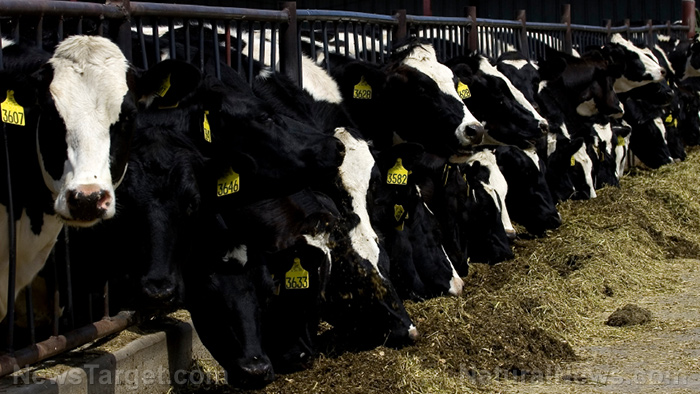
Despite being constantly portrayed as such in popular media, not all extinction events involve the apocalyptic and instantaneous dying off of complex creatures such as the dinosaurs and other prehistoric beasts – some of them are more gradual and happen over longer periods of time and deal with creatures that are on the microscopic scale.
Such was the case for a previously unknown extinction event from 2.4 billion years ago that, according to researchers, effectively wiped out more than 80 percent of all the species on Earth at that time.
As noted by an international team of researchers, this extinction event likely happened as a result of the so-called "Great Oxidation," a geologic event in which a vast amount of free oxygen was released into the Earth’s atmosphere for the first time by photosynthetic cyanobacteria.
These microscopic organisms, more commonly known as blue-green algae, eventually exploded in their numbers, thus spelling the end for anaerobic bacteria, which died en masse due to the steady influx of oxygen.
The tables would soon turn for the oxygen-producing cyanobacteria population, however, with researchers noting that despite them gaining an initial foothold, the photosynthetic organisms eventually experienced a similar crash in their numbers – a direct result of their depletion of the primordial oceans’ nutrient stores.
This, researchers noted, was the world’s first mass extinction event. (Related: Study: Multiple supernovae triggered a mass extinction millions of years ago.)
According to researcher Malcolm Hodgskiss, this event is proof that die-offs can occur even in a microbe-dominated environment.
"This shows that even when biology on Earth is comprised entirely of microbes, you can still have what could be considered an enormous die-off event that otherwise is not recorded in the fossil record," Hodgskiss, a geologist from Stanford University, explained, noting that this extinction is greater in scale when compared to other extinction events such as the so-called “Great Dying” that happened some 252 million years ago and the Cretaceous-Tertiary (KT) extinction event that killed off the dinosaurs around 66 million years ago.
Hodgskiss and fellow researcher Peter Crockford, in a paper published in the Proceedings of the National Academy of Sciences, noted that this die-off ultimately paved the way for larger, more complex animals and plants to thrive.
A “snapshot” of the past
The researchers, assisted by experts from Nanjing University, the University of Colorado-Boulder and the Woods Hole Oceanographic Institution, examined several samples of the mineral barite, which they collected from the Belcher Islands in Canada’s Hudson Bay.
This particular mineral can store a “record” of the levels of oxygen found in the atmosphere at the time it was formed, thus helping to provide a snapshot of the extent of life's productivity during that particular period in time.
The research team found that around 2.05 billion years ago, the earth’s biosphere experienced a sudden drop in life.
According to the researchers, this sudden drop may be linked to the declining oxygen levels from the latter part of the Great Oxidation, as the two events occurred at roughly the same time in the geologic scale.
Findings confirm “Oxygen Overshoot” hypothesis
The findings support a hypothesis concerning the Great Oxidation event called the “oxygen overshoot.”
This hypothesis states that while oxygen-releasing microorganisms would initially flourish in the earth’s primordial oceans, they would inevitably hit a critical peak, which would then be followed by a massive die-off and eventually, a subsequent decrease in atmospheric oxygen.
"Some of these oxygen estimates likely require too many microorganisms living in the ocean in Earth's past," Crockford, a postdoctoral researcher at the Weizmann Institute of Science and Princeton University, said.
According to Crockford, their findings, which reveal the significant biological consequences of oxygen levels above or below the capacity of the planet, can help other scientists hone their estimates regarding the size of the oxygen overshoot.
"We can now start to narrow in on what the composition of the atmosphere could have been through this biological angle," Crockford explained.
Learn more about the mass extinctions that Earth has experienced at Extinction.news.
Sources include:
Please contact us for more information.





















